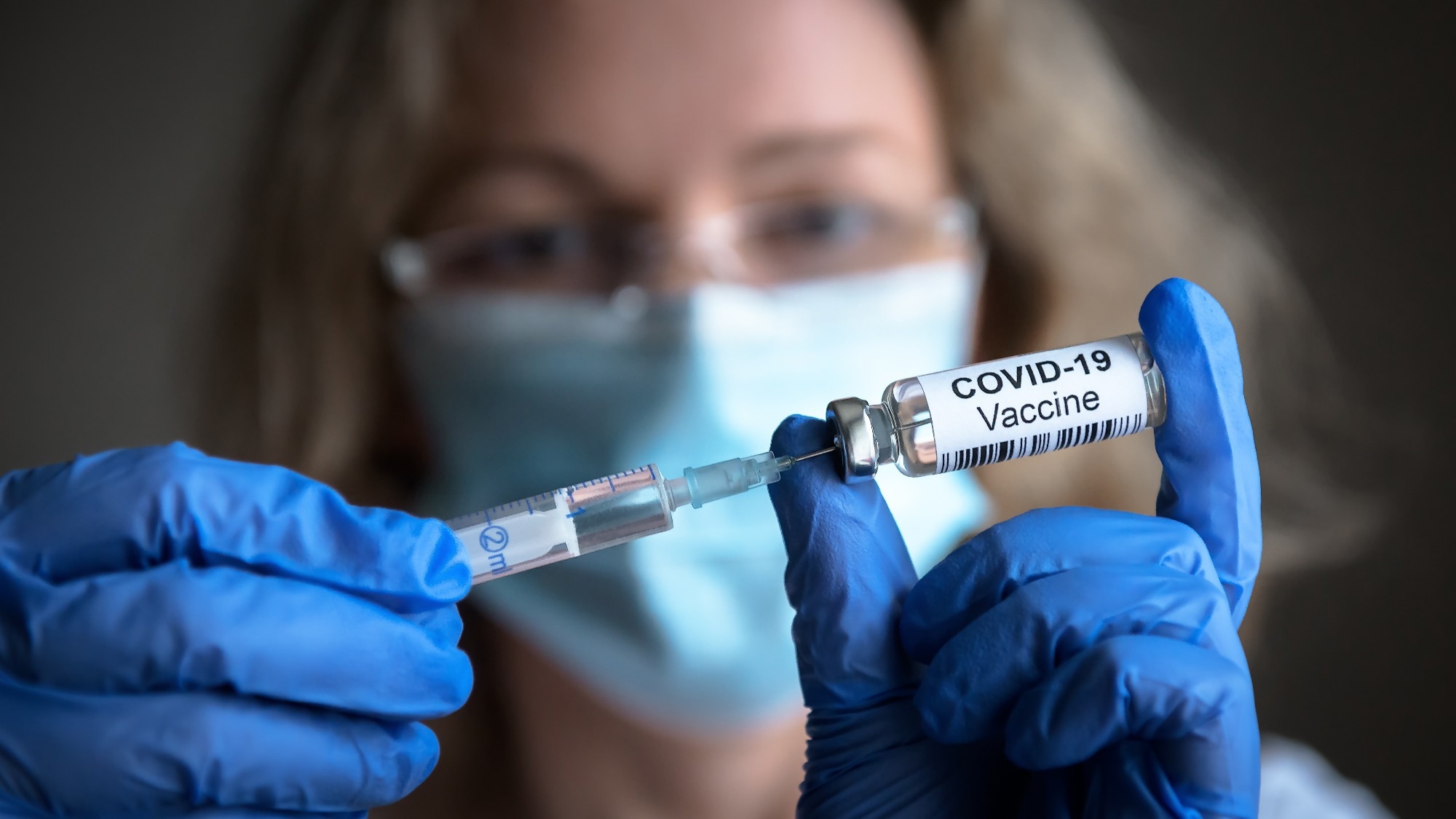Home » Health News »
Have social determinants of health affected COVID-19 vaccine uptake?
In a recent study published in Vaccine, researchers investigated clinically significant predictors of coronavirus disease 2019 (COVID-19) vaccination uptake among individuals with social and medical susceptibility to severe acute respiratory syndrome coronavirus 2 (SARS-CoV-2) infection, residing in the Essex County of New Jersey.

Medically and socially vulnerable individuals (including individuals aged 65 years and above, non-telework-type essential workers, individuals with comorbidities, and minoritized racial groups) face COVID-19 prevention and management barriers, as well as an increased disease burden and risk of SARS-CoV-2 infection-related death. There is a growing focus on the social determinants of health (SDH) as a means of understanding disparities in SARS-CoV-2 vaccination rates and infection outcomes.
About the study
In the present study, researchers explored individual- and structural-level factors that could estimate SARS-CoV-2 vaccination uptake among individuals medically and socially susceptible to the infection.
The social determinants of health framework guided the study, which comprised 641 web-based questionnaires from individuals who participated in a trial conducted to boost SARS-CoV-2 testing rates.
The study participants could speak English and were at increased risk of COVID-19 severity outcomes, including death. A community collaborative board (CCB), including researchers, community members, and service providers, conducted the study.
Community-based participatory research principles (CBPR) of increasing community abilities and adding community perspectives to all research aspects were followed. Multiple logistic regression modeling was performed, and the odds ratios (ORs) were calculated.
Variables analyzed included age, sex, ethnicity, race, sexual preference, substance use or alcohol disorder, chronic diseases (such as diabetes and cardiovascular disease), and psychiatric disorders. Knowledge variables included having precise data on COVID-19 prevention and having SARS-CoV-2 infection-related confusion.
Variables selected for COVID-19-related beliefs included COVID-19 development concerns, trusted COVID data sources, COVID-19-related conspiracies [evaluated using the human immunodeficiency virus (HIV) Conspiracy Beliefs Scale (CBS)], history of influenza vaccinations, and SARS-CoV-2 testing.
Structural variables included (i) access to resources during COVID-19; (ii) demographics (i.e., education, income, insurance, employment, essential worker, internet accessibility, challenges while homeschooling); (iii) housing, and (iv) critical consciousness scores, based on the Critical Reflection about Social Determinants of Health scale (CR_SDH).
Individuals were enrolled in the clinical trial until 10 February 2021. The staff workers and CCB put fliers at churches, bus stops, healthcare agencies, grocery stores, bulletin boards, social service organizations, and pharmacies.
The team conducted county-level street outreach abiding by social distancing recommendations. Individuals willing to participate underwent a brief telephonic screening. Individuals were screened for medical and social vulnerability to COVID-19 using the National Institute of Health (NIH) NOT-20-120 questionnaires.
The participants were considered medically and socially vulnerable if they were: non-White; aged above 65 years; lived in poverty; worked in locations requiring close contact with other individuals; did not practice social distancing or mask-wearing frequently; interacted with unmasked individuals; resided with individuals exposed to SARS-CoV-2; suffered from psychiatric disorders or comorbidities; faced housing insecurities; and were migrants or immigrants. Participants resided in Essex County, New Jersey.
The team assessed the disability status based on the American Community Survey (ACS) of 2008 and measured self-efficacy, i.e., the belief in the ability to adapt, overcome, and have a say in external demands, using the General Self-Efficacy Scale (GSE).
Results
Most individuals were cisgender men (56%), African American or Black (81%), heterosexual (74%), and their mean age was 44 years. Most participants earned less than $24,999 annually (81%) and did not have a diploma, but had completed general educational development (GED) tests or had graduated from high school education (66%). Among the participants, around 33% were employed at time of assessment, another third belonged to the essential worker group. Most participants (72%) had more than one comorbidity, and 36% were disabled. Over 33% faced housing insecurities.
Among the study participants, 47% trusted official data sources for COVID-19-related information the most, 21% said they were confused about information related to COVID-19, 66% were influenza vaccinees, 55% had been administered COVID-19 vaccines, and 83% had undergone SARS-CoV-2 testing.
Vaccine uptake could be estimated by individual-level factors such as being aged equal to or above 65 years, suffering from HIV-caused acquired immunodeficiency syndrome (AIDS), having received influenza vaccines, and having a history of SARS-CoV-2 testing. Those who believed in SARS-CoV-2 infection conspiracies showed a lower likelihood of receiving SARS-CoV-2 vaccines.
The probability of SARS-CoV-2 vaccine uptake elevated by 1.0 times with each yearly increase in age; increased by 3.8 times among AIDS patients compared to healthy individuals; increased over 2.0 times among those with a history of influenza vaccination compared to non-influenza vaccines; and increased more than 2.6 times among individuals with SARS-CoV-2 test reports.
Contrastingly, individuals with a belief in SARS-CoV-2 infection conspiracies had a lower probability of SARS-CoV-2 vaccine uptake than individuals without such beliefs.
Conclusions
Overall, the study findings showed that individuals with AIDS, older age, influenza vaccination history, and SARS-CoV-2 testing reports showed an increased likelihood of receiving SARS-CoV-2 vaccines. In contrast, those who believed in SARS-CoV-2 infection conspiracies showed a lower likelihood of receiving SARS-CoV-2 vaccines.
Although the study found individual-level factors to significantly affect vaccine uptake, significant effects were not found for structural-level factors. Further research is required to understand how public health interventions may mitigate the effects of social determinants of health on COVID-19 vaccine uptake.
- Campbell J, Kaur A, Gamino D, et al. (2023). Individual and structural determinants of COVID-19 vaccine uptake in a marginalized community in the United States. Vaccine. doi:/10.1016/j.vaccine.2023.07.077. https://www.sciencedirect.com/science/article/abs/pii/S0264410X23009234
Posted in: Medical Research News | Disease/Infection News | Healthcare News
Tags: AIDS, Alcohol, Cardiovascular Disease, Chronic, Clinical Trial, Coronavirus, covid-19, Diabetes, Disability, Education, Efficacy, Healthcare, HIV, Immunodeficiency, Influenza, Poverty, Public Health, Research, Respiratory, SARS, SARS-CoV-2, Severe Acute Respiratory, Severe Acute Respiratory Syndrome, Syndrome, Vaccine, Virus

Written by
Pooja Toshniwal Paharia
Dr. based clinical-radiological diagnosis and management of oral lesions and conditions and associated maxillofacial disorders.



